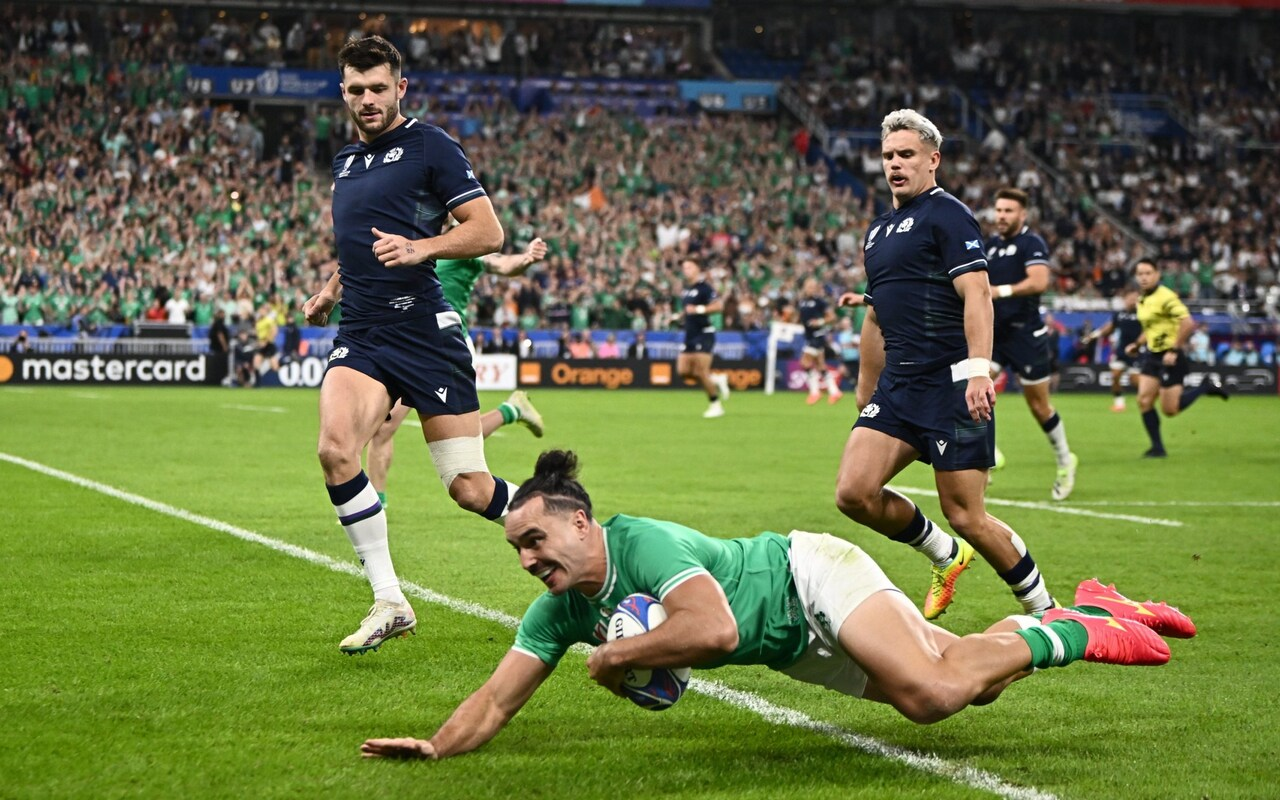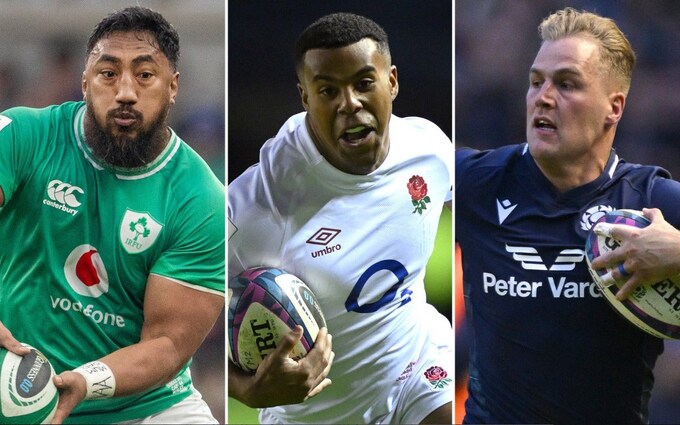Today, it is almost de rigueur. So lax have the entry requirements become that if you wonder if the Scotland team that just vanquished England can be called authentically Scottish at all, given that the majority were not born there. In addition, research by Paul Tait, an expert on this topic for Americas Rugby News, shows how 22 of the 23 imported players cannot even be called homegrown. Alec Hepburn and Ben White previously wore England colours, while Jack Dempsey turned out for Australia. Ben Healy and Sione Tuipulotu were specifically recruited from overseas for the purpose of playing for Scotland, with Healy not moving from Ireland until he was 23 and Tuipolutu only arriving from Australia at 24.
This seems unfeasibly late for anyone to insist that they have acquired some undying devotion to their adopted land. On the contrary, it smacks of countries carefully using a loose system to their advantage. And Scotland, in the Six Nations, are the runaway leaders on this front. Their 23 players born outside England might be a staggering figure, but it is not even their record. Two years ago, it was 27. Consider how this compares with their rivals: England have six foreign-born players, Wales five, Ireland eight, France six and Italy eight.
External talent strangling domestic development
It would have taken a brave soul to point out this glaring discrepancy to Scotland fans in Edinburgh last Saturday night. Everywhere you looked outside Murrayfield, the bagpipes blared and the Tennent’s flowed. If a fourth Calcutta Cup on the bounce – a sequence unmatched for 128 years – was not worthy of celebration, what was? There is a legitimate debate to be had, though, about how much the Test team’s reliance on external talent is strangling domestic development. When Scotland’s Under-20s played Ireland last year, they were marmalised 82-7.
Even the Irish, heralded as the gold standard in everything they touch, know what it means to exploit rugby’s nebulous definitions of nationhood. Bundee Aki, James Lowe and Jamison Gibson-Park are three players who have underpinned Ireland’s transformation into Grand Slam winners and, for a while, the world’s No 1-ranked side. But all of them were integrated from New Zealand’s professional rugby system, targeted well into adulthood for moves to Ireland so that they could fulfil the residency rules. Lowe is about as Irish as McDonald’s Shamrock Shake, coming to the country when he was 25 and having played for the Maori All Blacks against the British and Irish Lions.
How much does all this matter? There can be no doubt as to Lowe’s popularity in Ireland, in light of the wing’s stellar performances, coupled with frequent protestations that his head and his heart are in the Emerald Isle. Very endearing, of course – as was his father’s decision to watch one of his victories wearing full Irish kit and a Leinster hat. But in a technical sense, it does nothing to burnish his Irish credentials. Here is a player who, on recognising in his mid-20s that he was never going to realise his All Black dreams, swapped Nelson for Dublin on the assurance that he would be wearing green three years later. The decision, while an emphatic success for his CV, casts an unflattering reflection on the romance of Test rugby.

James Lowe has made a fine start to his Test career for Ireland CREDIT: Getty Images/Harry Murphy


Your best versus our best: it is the sacrosanct precept on which all international team sport is built. And yet even a competition as enmeshed in tribal identity as the Six Nations has drifted from these moorings. Take last weekend’s Calcutta Cup, a contest electrified by Scotland’s Duhan van der Merwe, whose name hardly suggests a rugged clan from the Cairngorms. Not that the issue can ever be reduced to a single player. Of the 39-man squad selected this year by Gregor Townsend to wear Scottish blue, an astonishing 23 were born elsewhere.
The fluidity of nationality constantly lurks in the background at this tournament. I recall speaking in 2012 to Mouritz Botha, who spent all his formative years in South Africa, after he made the grade for England courtesy of the three-year residency rule. “You develop pride and passion for your country over time,” he explained. But is this sufficient? Can this fast track to unwavering national allegiance ever be more, in sporting terms, than an alliance of convenience?
Ollie Hassell-Collins offers an instructive example. The memory is still fresh of the two Six Nations caps the wing earned last year for England, where he gushed about how long he had dreamt of donning the red rose. One year on, with his career at Test level having hit the buffers, he reveals to The Telegraph that he is equally smitten by the notion of representing Wales. He has a Welsh grandmother, you see. And that, assuming he makes no surprise impression in England’s ranks in the meantime, will be all he needs to start belting out Hen Wlad Fy Nhadau (Land of My Fathers) in 2026.
The situation is rapidly entering the realm of absurdity. Hassell-Collins, we should stress, is proposing nothing against the rules. World Rugby’s Regulation Eight clarifies that his qualifications are assured by having a grandparent born in the same country, and that a switch of national loyalties is possible after a 36-month stand-down period. But we can surely shelve any pretence that his ruse is a passion project. Here is a player who, as it stands, is not even deemed good enough for the England A team, but who is allowed to keep the Wales option on the table as a convenient contingency.
It begs the question of what we are watching here. Eddie Butler’s video montages would famously couch the Six Nations in terms of centuries of battles and bloodlines, but realities on the pitch today are not always so poetic. Look at Nick Tompkins, the centre who was born in Sidcup to English parents, who went to school in Bromley, and who turned out for England with the Under-18s, Under-20s and Saxons. Now, after all that nurturing under the English system, he competes for Wales, for no better reason than he has a grandmother born in Wrexham.
The Tompkins case provides an argument for Test eligibility to be based either on a stronger familial bond or a longer residency period. After all, this is a controversy that extends far beyond Wales. Immanuel Feyi-Waboso, a glittering prospect of an international wing at 21, was born and raised in Cardiff but opted to play for England via the tried-and-tested grandmaternal route. You can imagine that Neil Jenkins spoke for many when the former fly-half was quoted by Warren Gatland as saying: “If he doesn’t want to play for Wales, he can b----- off.” A young man growing up in the shadow of the Principality Stadium, but still defecting to the implacable enemy? It would once have been unthinkable.
Nick Tompkins (right) played for England's age-grade teams but switched to Wales for senior international rugby CREDIT: Getty Images/Shaun Botterill
Today, it is almost de rigueur. So lax have the entry requirements become that if you wonder if the Scotland team that just vanquished England can be called authentically Scottish at all, given that the majority were not born there. In addition, research by Paul Tait, an expert on this topic for Americas Rugby News, shows how 22 of the 23 imported players cannot even be called homegrown. Alec Hepburn and Ben White previously wore England colours, while Jack Dempsey turned out for Australia. Ben Healy and Sione Tuipulotu were specifically recruited from overseas for the purpose of playing for Scotland, with Healy not moving from Ireland until he was 23 and Tuipolutu only arriving from Australia at 24.
This seems unfeasibly late for anyone to insist that they have acquired some undying devotion to their adopted land. On the contrary, it smacks of countries carefully using a loose system to their advantage. And Scotland, in the Six Nations, are the runaway leaders on this front. Their 23 players born outside England might be a staggering figure, but it is not even their record. Two years ago, it was 27. Consider how this compares with their rivals: England have six foreign-born players, Wales five, Ireland eight, France six and Italy eight.
External talent strangling domestic development
It would have taken a brave soul to point out this glaring discrepancy to Scotland fans in Edinburgh last Saturday night. Everywhere you looked outside Murrayfield, the bagpipes blared and the Tennent’s flowed. If a fourth Calcutta Cup on the bounce – a sequence unmatched for 128 years – was not worthy of celebration, what was? There is a legitimate debate to be had, though, about how much the Test team’s reliance on external talent is strangling domestic development. When Scotland’s Under-20s played Ireland last year, they were marmalised 82-7.
Even the Irish, heralded as the gold standard in everything they touch, know what it means to exploit rugby’s nebulous definitions of nationhood. Bundee Aki, James Lowe and Jamison Gibson-Park are three players who have underpinned Ireland’s transformation into Grand Slam winners and, for a while, the world’s No 1-ranked side. But all of them were integrated from New Zealand’s professional rugby system, targeted well into adulthood for moves to Ireland so that they could fulfil the residency rules. Lowe is about as Irish as McDonald’s Shamrock Shake, coming to the country when he was 25 and having played for the Maori All Blacks against the British and Irish Lions.
How much does all this matter? There can be no doubt as to Lowe’s popularity in Ireland, in light of the wing’s stellar performances, coupled with frequent protestations that his head and his heart are in the Emerald Isle. Very endearing, of course – as was his father’s decision to watch one of his victories wearing full Irish kit and a Leinster hat. But in a technical sense, it does nothing to burnish his Irish credentials. Here is a player who, on recognising in his mid-20s that he was never going to realise his All Black dreams, swapped Nelson for Dublin on the assurance that he would be wearing green three years later. The decision, while an emphatic success for his CV, casts an unflattering reflection on the romance of Test rugby.
James Lowe has made a fine start to his Test career for Ireland CREDIT: Getty Images/Harry Murphy
On paper, the enabling of all these nationality shifts should prove beneficial for the game’s emerging countries. The problem is that many players are jumping ship from one Tier One nation to another. This is a practice expressly forbidden in rugby league, but in union it is rife. Just as Lowe reinvented himself in Ireland out of frustration that his progress in New Zealand had stalled, Hassell-Collins’ designs on swapping England for Wales are purely pragmatic, verging on opportunistic. The game’s top tier looks more of a self-sustaining cabal than ever.
It is strange these patterns have not yet aroused a more urgent discussion in rugby. In football, many have a fit of the vapours at the mere thought of choosing a successor to Gareth Southgate who is not English. But at the Calcutta Cup, the fact that man-of-the-match Van der Merwe honed his craft in South Africa, not Scotland, passed virtually without mention. Your best versus our best? Increasingly, the Six Nations seems less about blood ties than the enlisting of guns for hire.